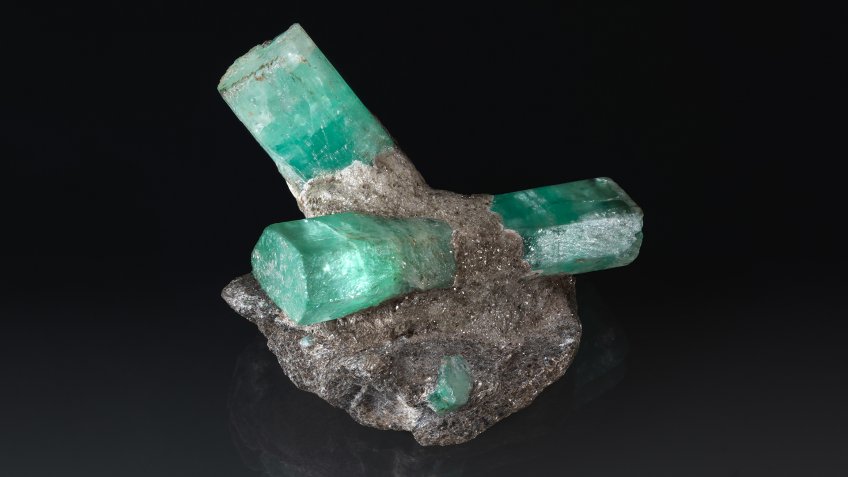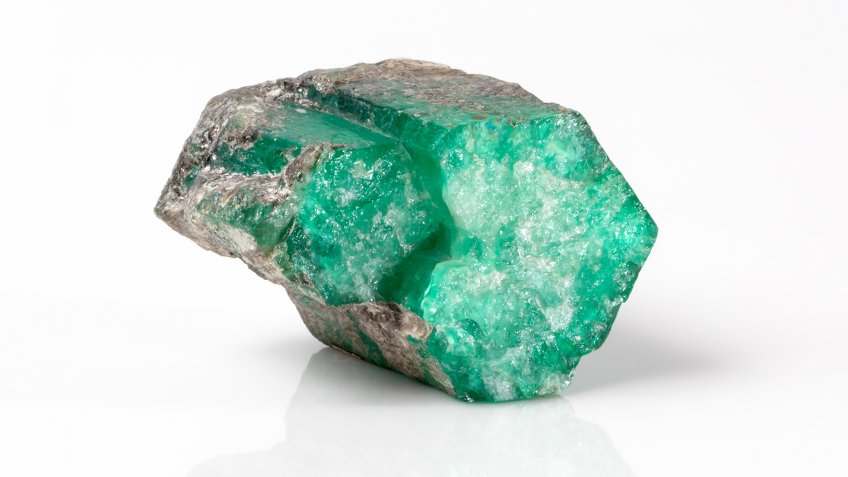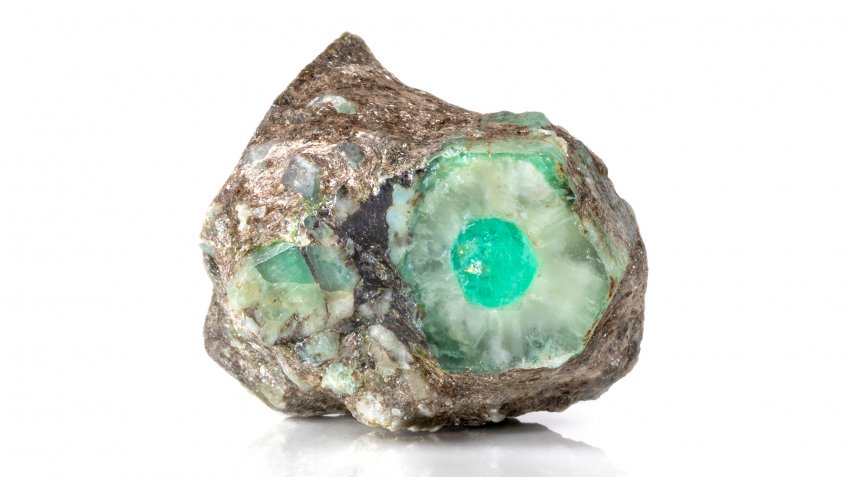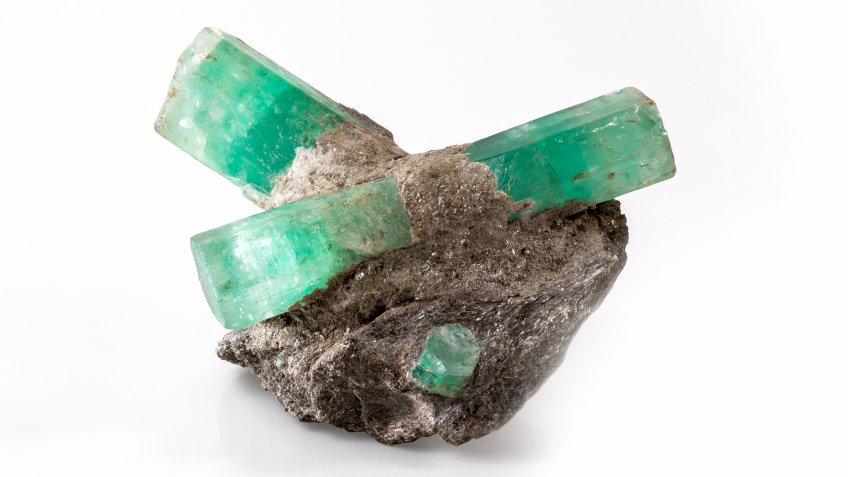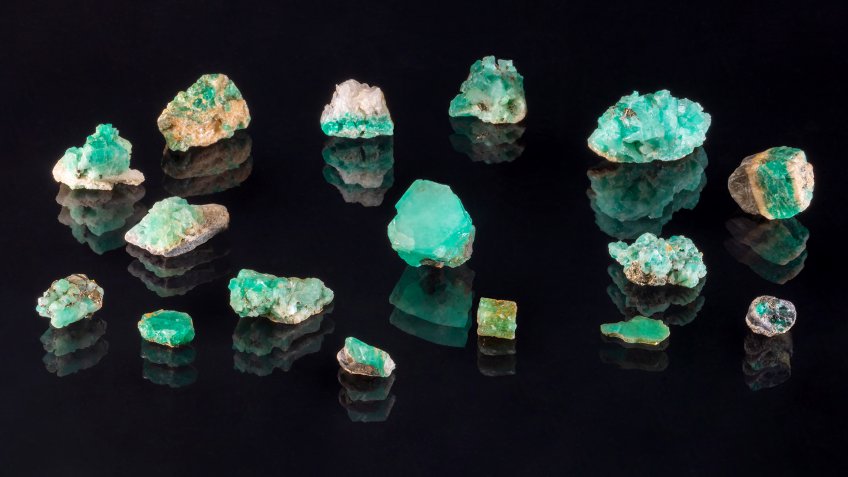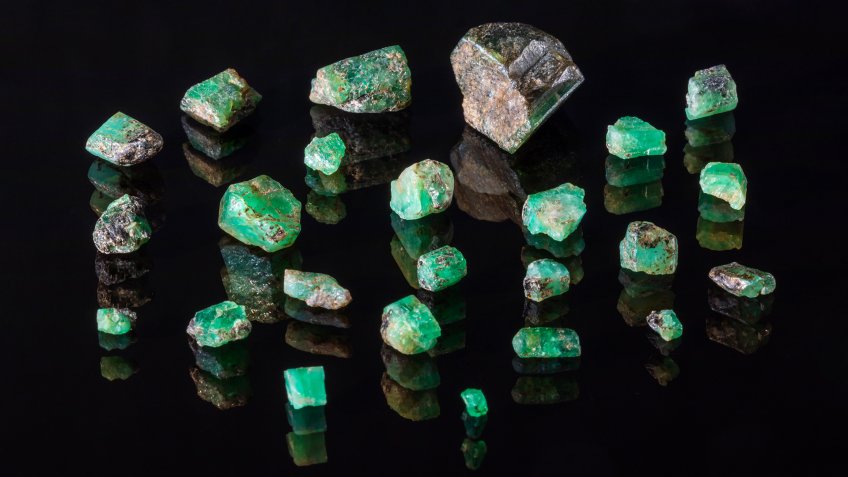
The pre-revolutionary history of the Ural emeralds is a classic detective story. The stone itself encourages fraud and forgery. As for diamonds, there is a standard technique of evaluation with 10x magnification, but the quality of an emerald is defined by eye judging by its color hue and transparency. Sometimes it is not so easy to separate the wheat from the chaff. That is why there is such a wide price range: from $3 to $650 per gram.
The intrigue can be seen even at the macro level. The Colombian emeralds are considered the best on the world jewelry market. As for the volume of their production, according to a modest estimate, it exceeds a half of the whole world. The Ural mines are not considered the favorite on the world market, but seven of the ten best emeralds in the world were found there. The potential of the explored reserves of the main Malyshevo mine is also impressive - over 60 tons. Today they extract 150-200 kilograms a year, making it the third-largest producer in the world in terms of volume.
The emerald mines of the Urals owe their existence to a chance find of the local resin manufacturer Maxim Kozhevnikov. In December 1830, he was looking for the raw material for tar production among torn-out trees, and discovered the green gems. He took them to Ekaterinburg to get a price. The head of the lapidary factory, Yakov Kokovin, recognized the precious emeralds in the stones. However, the local expert, apothecary Gelsh, devalued the find:
"The mineral called emerald, because of the absence of chromium in it, is not emerald."
If this episode had been set in stone, the entire subsequent brilliant history of the Ural emeralds might not have happened. The fate of the deposit was saved by Kokovin's persistence and the professionalism of the staff of the Mining Cadet Corps. The lapidary factory still sent the samples to the Mining Department in the capital, where they were examined by experts. From there, the samples were sent for analysis to the only school of science in the world at that time, where the emeralds were confirmed as unique.
In 1831-32 two emerald mines were discovered in the Urals. The imperial house was delighted. Kozhevnikov even wanted to put a lifetime monument in a deep forest near the river Tokovaya, on the site of the discovery. Kokovin received an award, but in 1835 he was deprived of it and taken under arrest, on a false accusation, as the witnesses asserted. Perhaps the stone-cutter was the victim of a major official, a collector, who could not cope with the temptation to steal the treasures of the state.
The placers were owned by the imperial treasury from 1831 to 1862. During that time, 142 poods (2,326 kilograms) of emeralds were produced there, and the country became one of the world leaders in mining them.
Despite the enormous potential, in 1862 the mines were leased to private miners. First to domestic, and in 1898 to the Anglo-French "New Emerald Company". It attracted through the sale of shares 100 thousand pounds sterling, but did not pay a penny of dividends and showed losses. Nevertheless, it became famous in Paris as a major marketer of emeralds of excellent quality. In 1905 alone, 286 thousand francs were paid for the rough stones. At that time, it corresponded to 83 kilograms of pure gold (284 million today's rubles).
There is a possibility that the famous emerald parure of British Queen Victoria, a gift from her husband Prince Albert for their fifth wedding anniversary, contains emeralds exported from Russia, which means they were mined in the Urals. These stones are impeccable in purity and color, but historically, perhaps, emeralds from the collection of the Mountain Museum are of greater importance. This is because among them are the first Kokovin specimens, which were brought to St. Petersburg. Without them, Russia would not have joined the "club" of the world's largest suppliers of emeralds.

